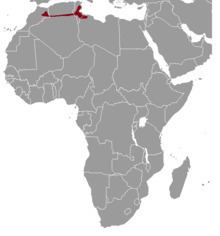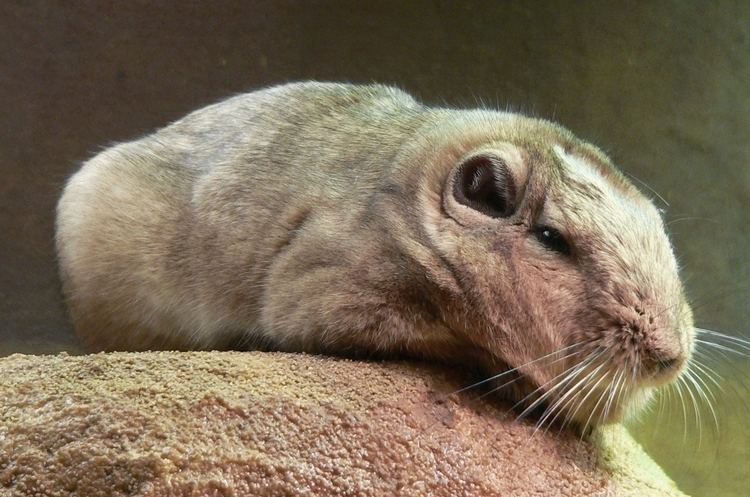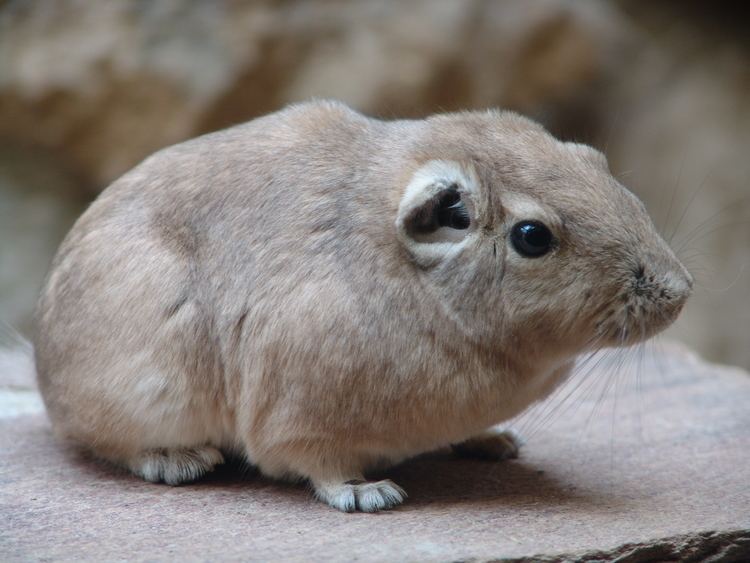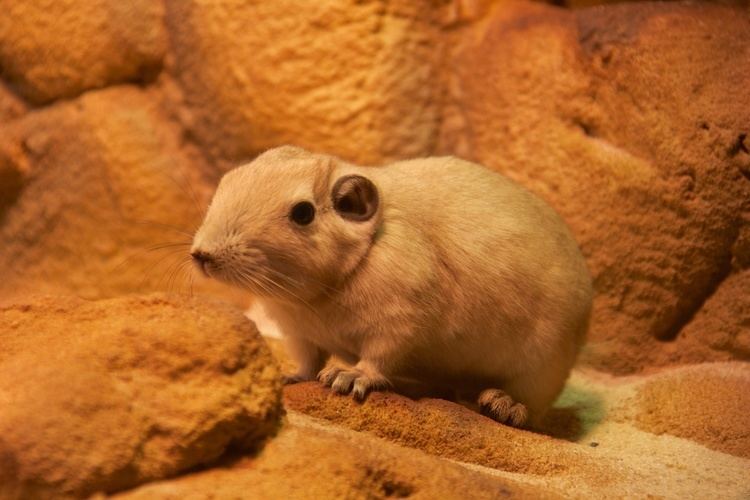Infraorder Ctenodactylomorphi Phylum Chordata Rank Species | Suborder Hystricomorpha Family Ctenodactylidae Higher classification Ctenodactylus Order Rodent | |
 | ||
Similar Ctenodactylus, Gundi, Rodent, Mammal, Dassie rat | ||
Common gundi ctenodactylus gundi prague zoo
The common gundi (Ctenodactylus gundi) is a species of rodent in the family Ctenodactylidae. It is found in Algeria, Libya, Morocco, and Tunisia. The parasitic organism Toxoplasma gondii was first described in 1908 in Tunis by Charles Nicolle and Louis Manceaux within the tissues of the gundi.
Contents

Description

The common gundi grows to a length of between 16 and 20 cm (6.3 and 7.9 in), having a stumpy tail and weighing about 185 g (6.5 oz). It resembles a guinea pig in appearance, having big eyes, flat ears and short limbs.
Distribution

This gundi is found in northern Africa on the south side of the Atlas Mountains at altitudes up to about 2,900 m (9,500 ft). Its range extends from western Libya through Tunisia and Algeria to eastern Morocco.
Ecology

This is a diurnal, herbivorous species of rodent. It lives in rocky, arid places, making its home in crevices and under boulders. It forages for leaves, stems, flowers and seeds over large distances because of the scarcity of suitable plants. It does not drink, obtaining sufficient water from its diet, nor does it store food as do some desert rodents. The gundi is a territorial species, with family groups of between three and eleven adults defending a territory. It reaches sexual maturity at the age of nine to twelve months. The gestation period is estimated to be 57 days and the litter size averages just under two. The newborn young have their eyes open and are clad with fur and able to control their body temperature from birth. The interval between litters is about 70 days.
Of the common gundis tested in southeastern Tunisia, nearly half were found to harbour Leishmania parasites; Leishmania tropica was found in five individuals and Leishmania major in one. These protozoan parasites are causative agents of cutaneous leishmaniasis, a skin disease transmitted by female sandflies, and it is thought that the gundi may act as a natural reservoir for the pathogen.
Status
The common gundi is a fairly common species with a wide range, and no particular threats have been identified. Its abundance varies according to the amount of precipitation that falls; in the west of its range it is replaced by Val's gundi (Ctenodactylus vali) in dry years. The International Union for Conservation of Nature has assessed it as being a species of "least concern".
